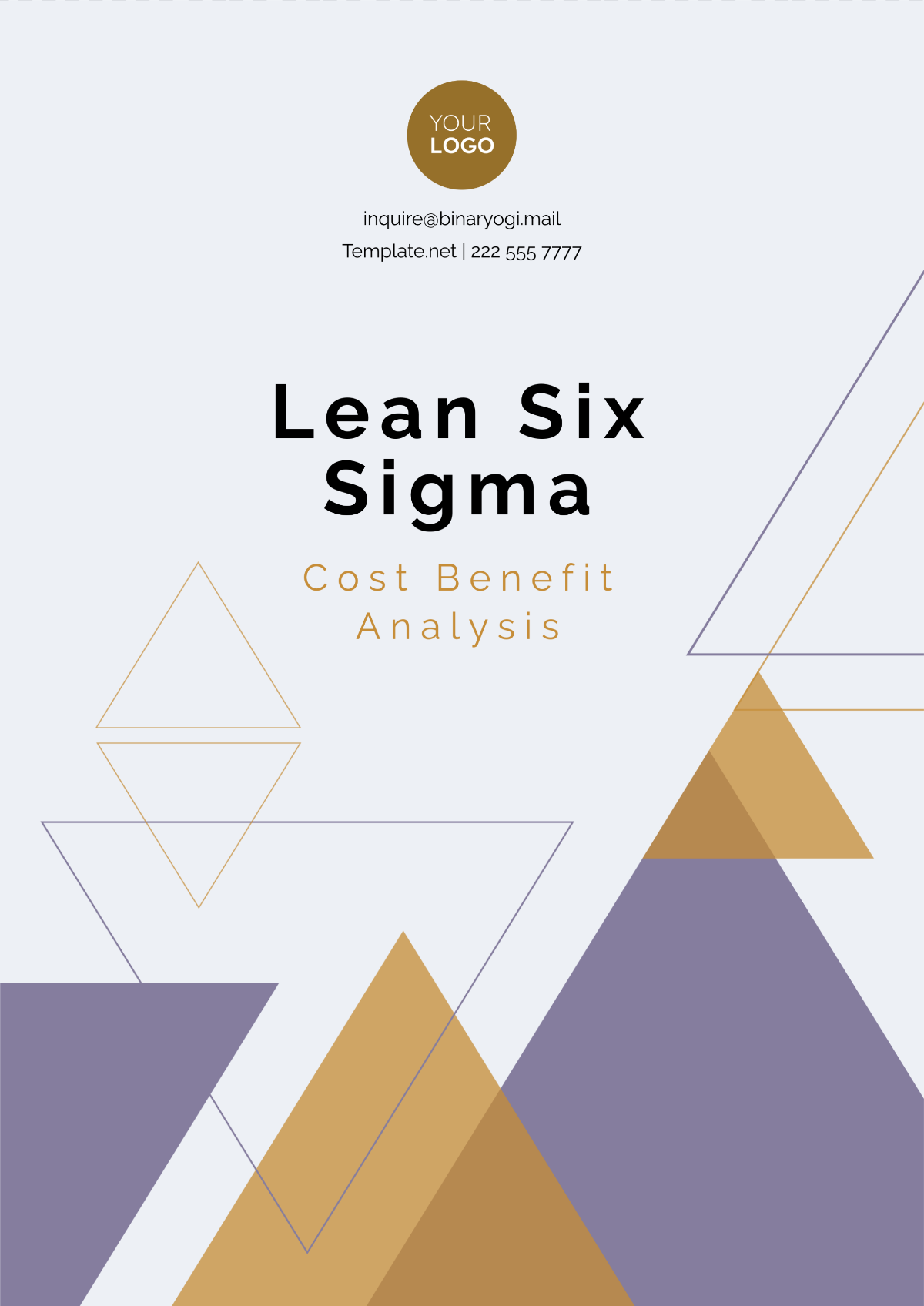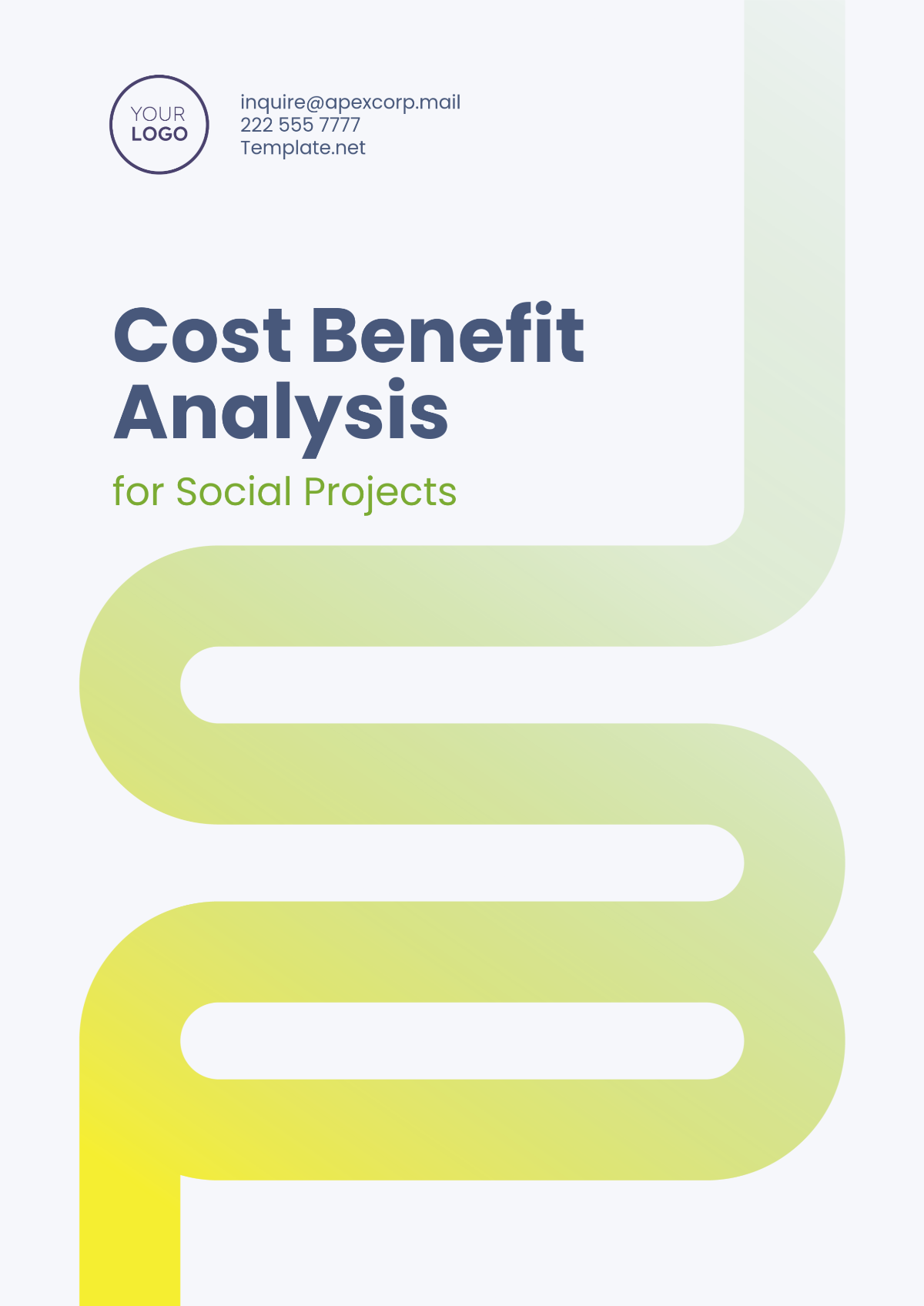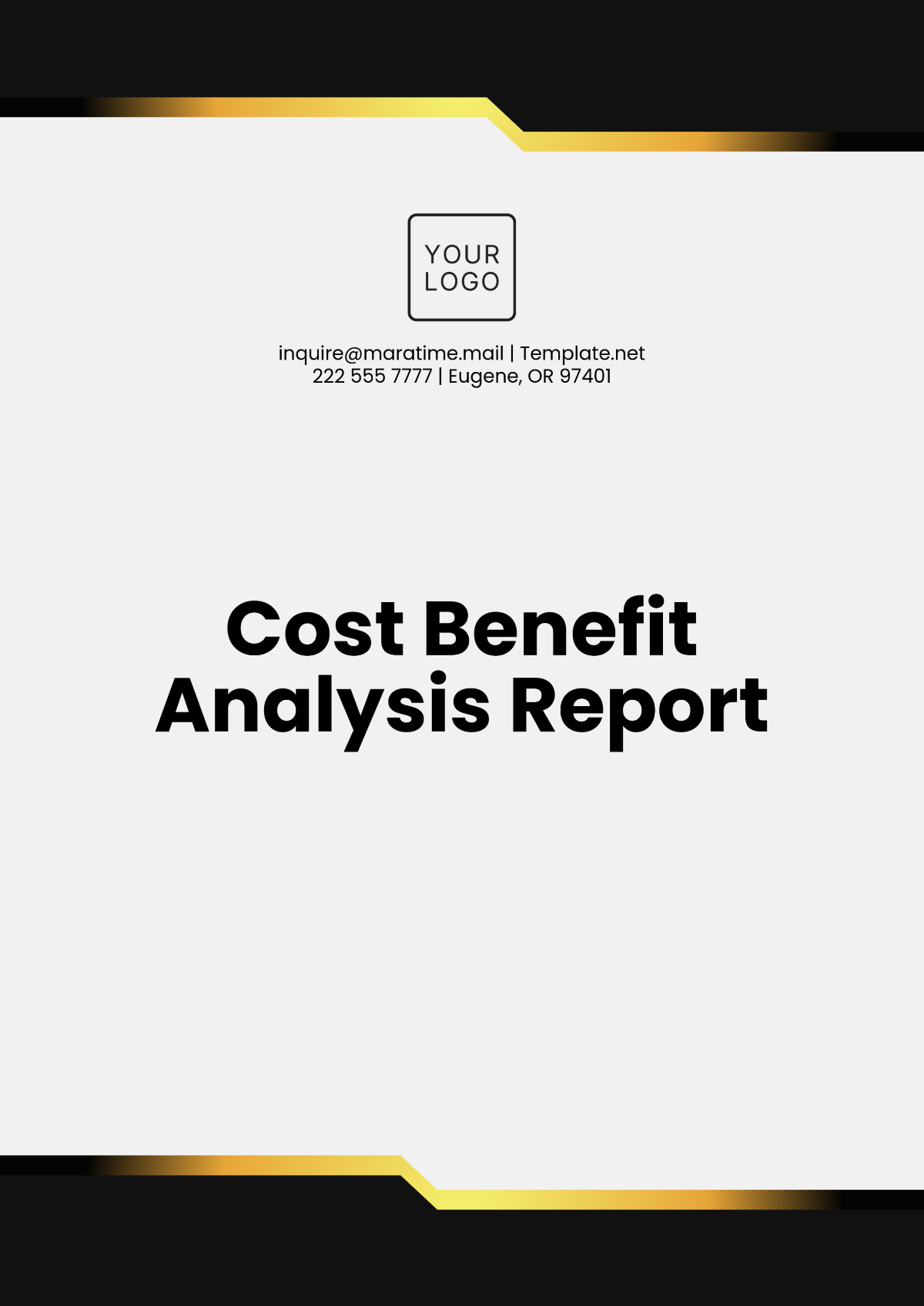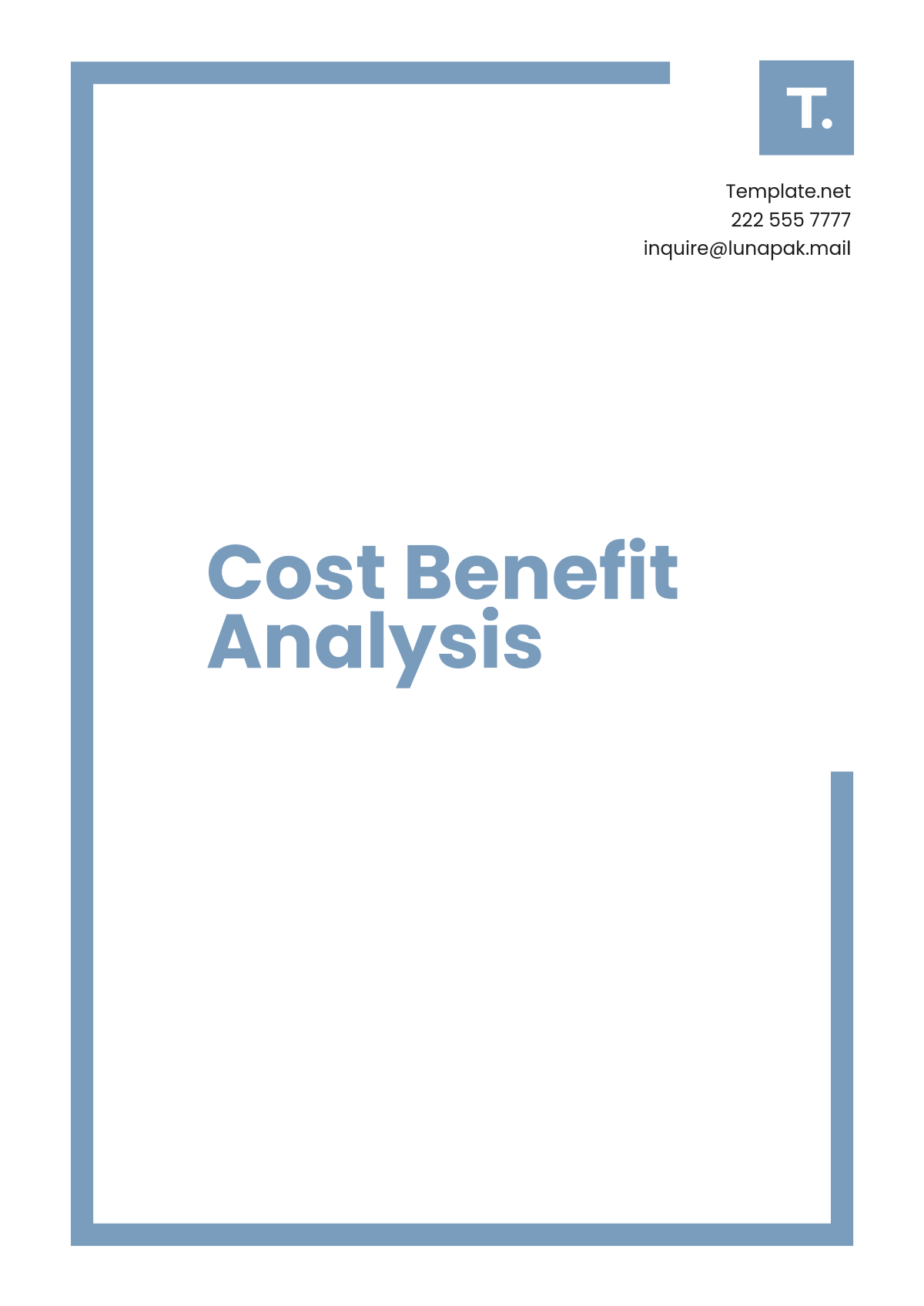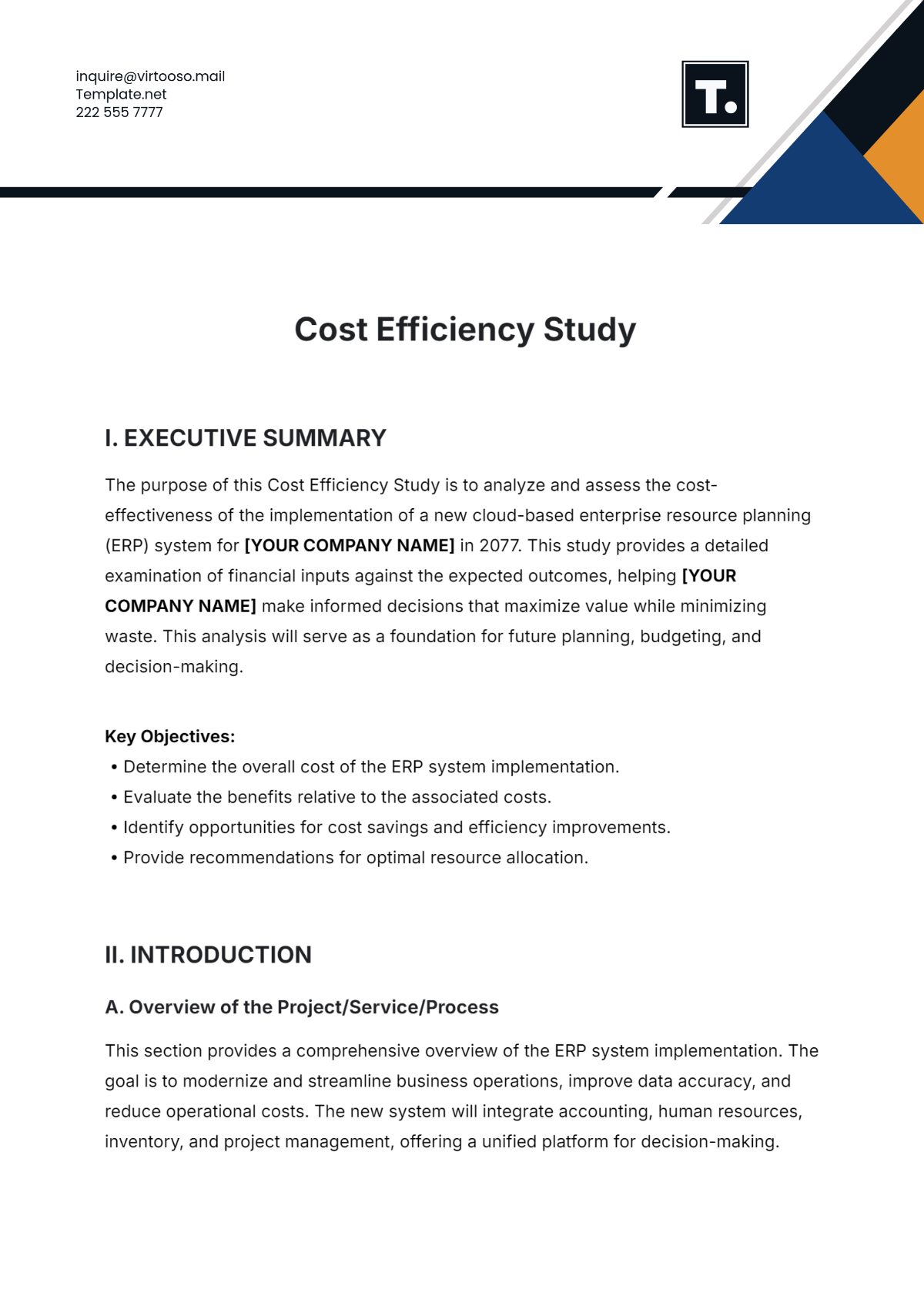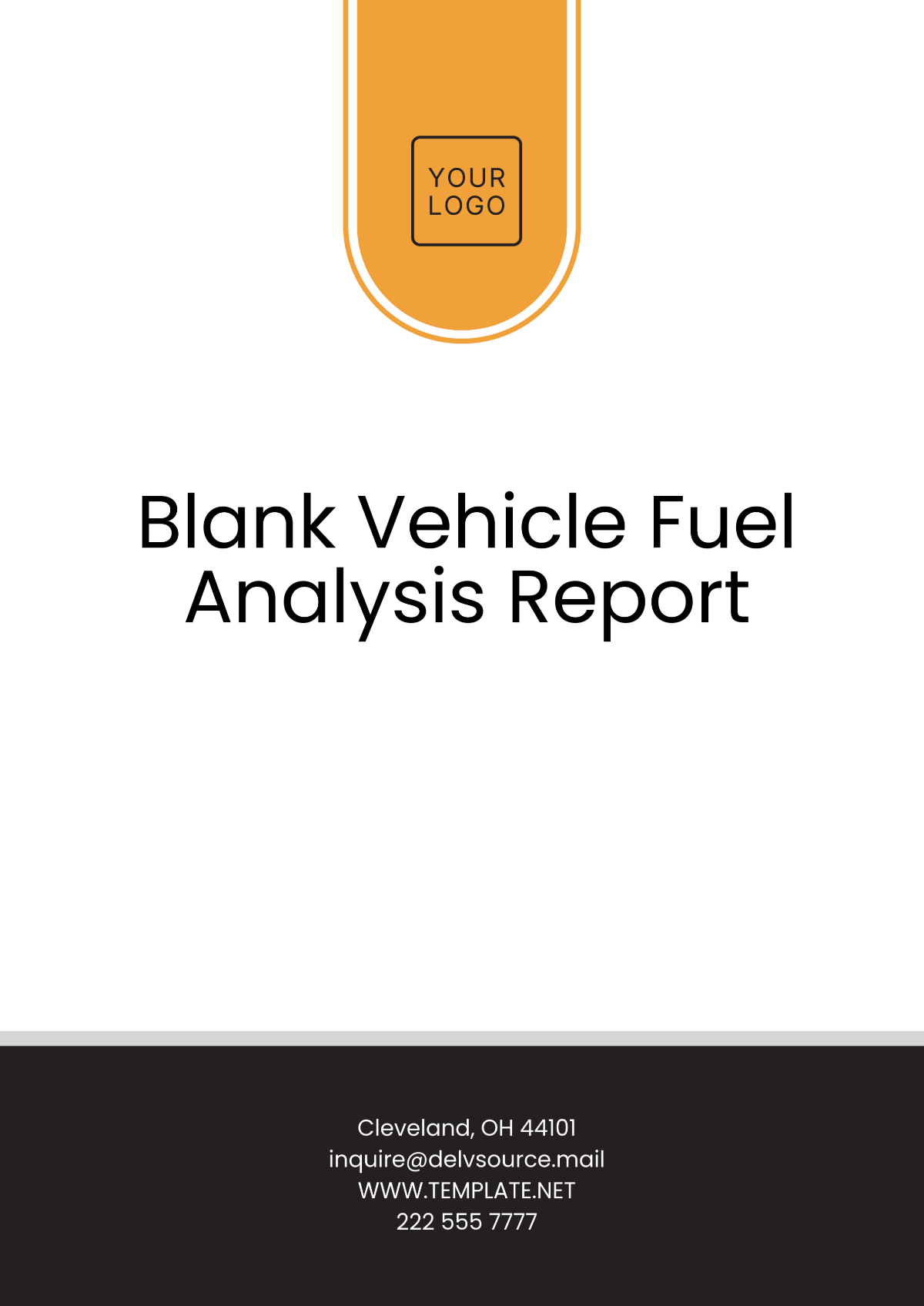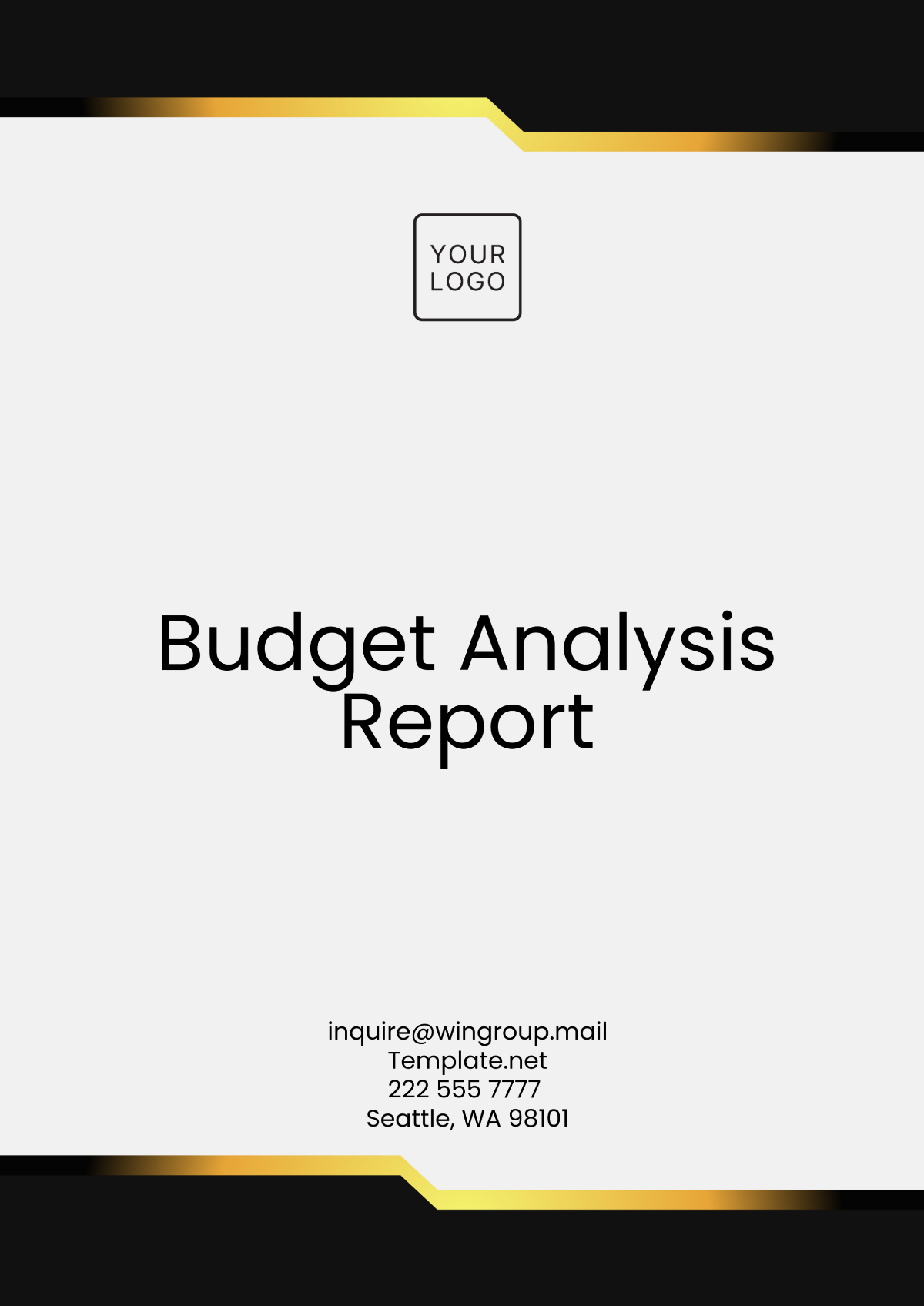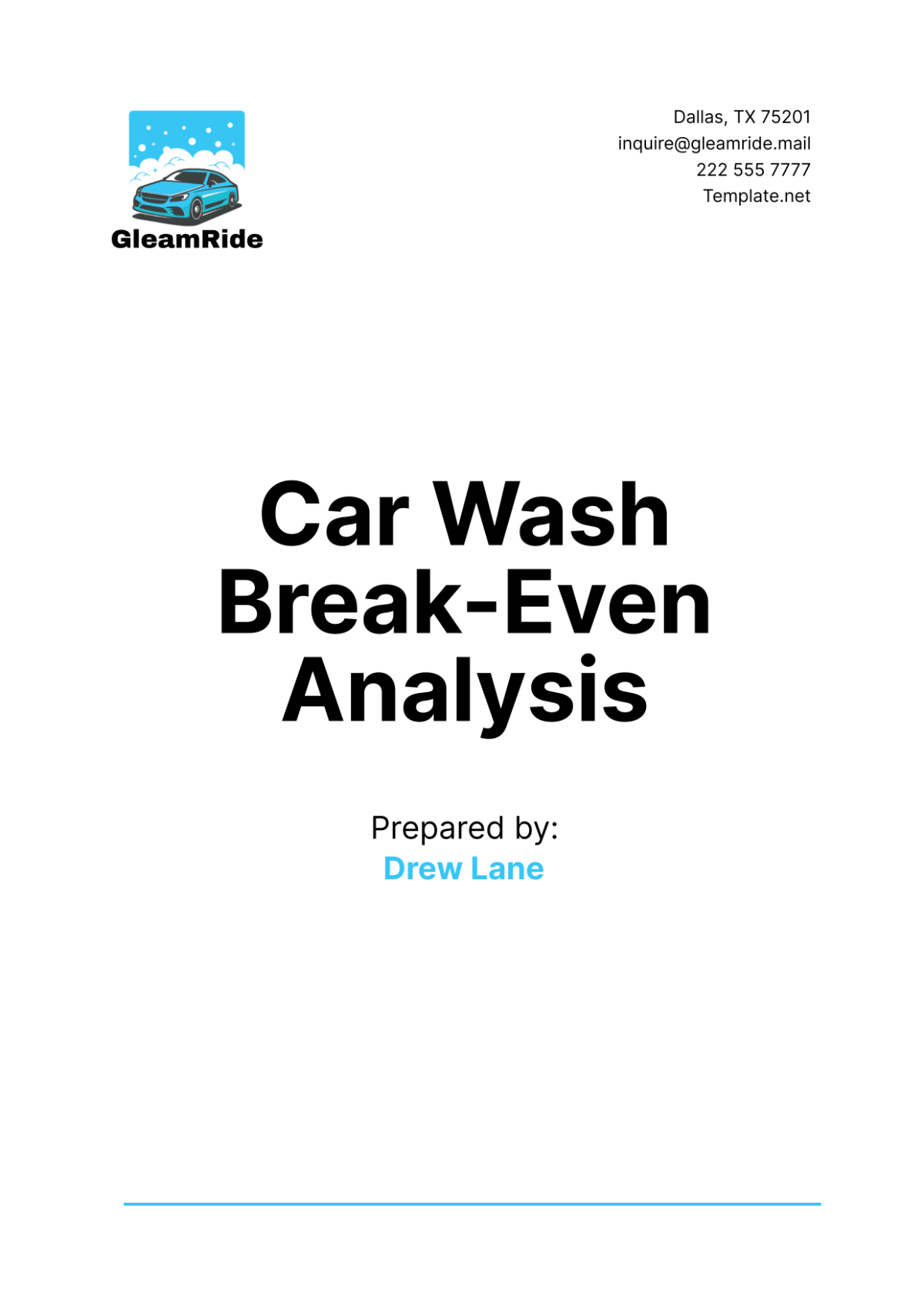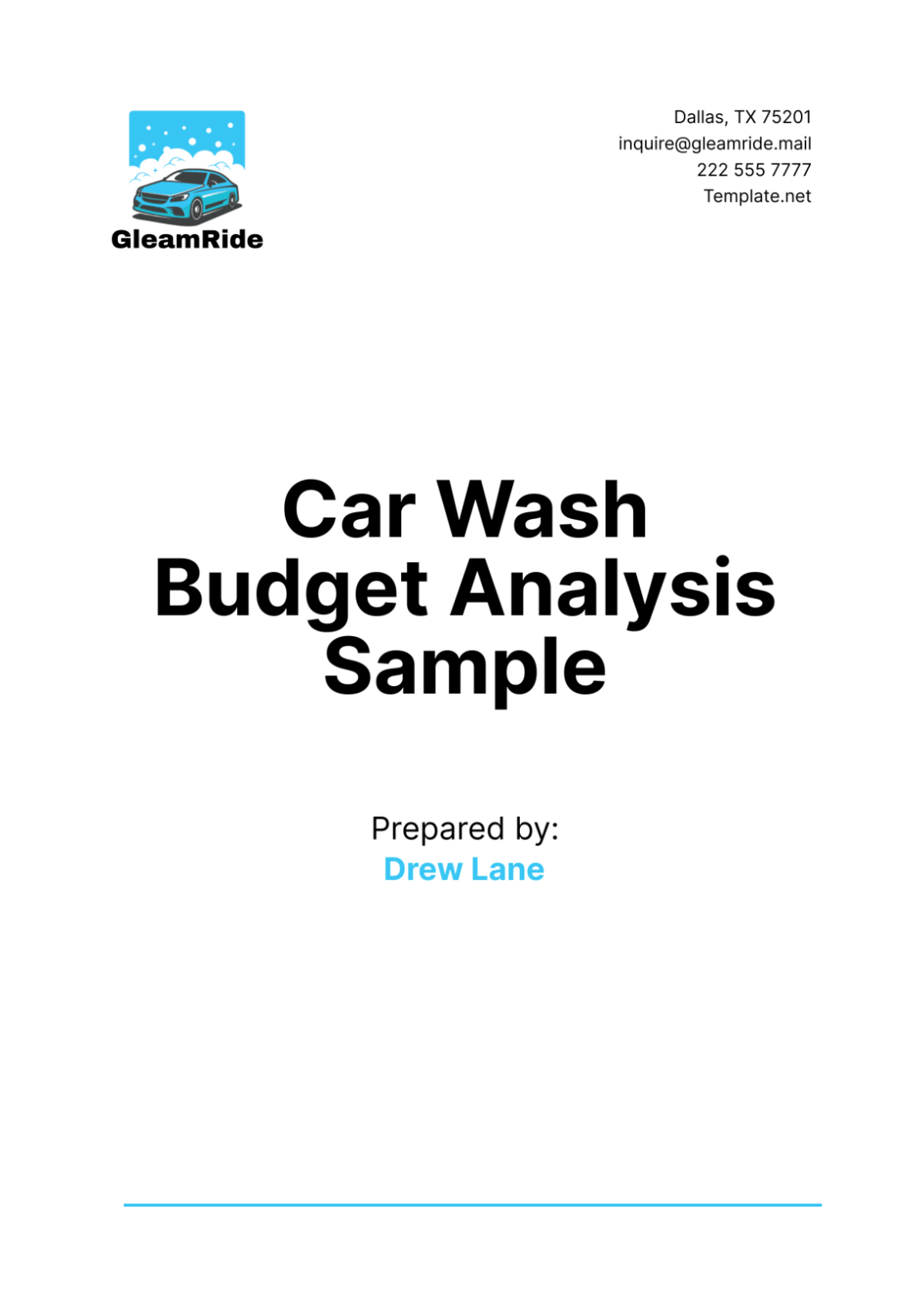Comprehensive Overtime and Shift Pay Analysis HR
Purpose
This document serves to provide an in-depth analysis of overtime and shift pay for our employees at [Your Company Name]. Our primary objective is to ensure that we are in full compliance with prevailing labor laws and to affirm that our employees are fairly compensated for their extra hours and shift differentials.
Scope
This analysis covers the period from [Start Date] to [End Date], focusing on [Specific Department(s) or All Departments]. It intends to provide a holistic overview, highlighting aggregate data, individual deviations, and areas that might require managerial attention or intervention.
Policy Review
All full-time employees will be compensated on a bi-weekly basis.
The standard hourly rate is $20.
The standard workweek consists of 40 hours, typically 8 hours per day for 5 days.
Any work carried out beyond the standard 8 hours a day or 40 hours a week will be considered as overtime.
Overtime will be compensated at 1.5 times the employee's regular hourly rate.
Morning Shift (Standard): No additional differential.
Afternoon Shift: Employees will receive an additional $2 per hour on top of their standard rate.
Night Shift: Employees will receive an additional $4 per hour on top of their standard rate.
Department 1
Department Name/Office Name: | |
Number of Employees: | 100 |
Department Head: |
Aggregate Working Hours Analysis
Total Standard Working Hours | Total Actual Working Hours | Overall Difference |
|---|---|---|
800 | 850 | +50 |
Overtime Analysis
Total Overtime Hours | Average Overtime Per Employee | Total Overtime Pay |
|---|---|---|
50 | .50 | $1,500 |
Shift Pay Analysis
Shift | Number of Employees in Shift | Differential Pay (/hr) | Total Overtime Pay |
|---|---|---|---|
Morning | 40 | 0 | 0 |
Afternoon | 30 | $2 | $480 |
Night | 30 | $4 | $960 |
TOTAL | $1,920 |
Individual Employee Breakdown
Employee Name | Position | Total Working Hours | Total Overtime Hours | Shift |
|---|---|---|---|---|
[Employee Name] | Software Engineer | 9 | 1 | Night |
Summary
Hours | Amount | |
|---|---|---|
Regular | 850 | $17,000 |
Overtime | 50 | $1,500 |
Shift Differential | $1,920 | |
Total | $20,420 |

The total overtime logged for the department is 50 hours, which translates to an average of 0.5 hours per employee. While this seems minimal per individual, it accumulates to a significant departmental cost.
Certain roles, such as [Software Engineers] and [Sales Associates], appear to have higher instances of overtime. This could be due to project deadlines, sales targets, or other role-specific demands.
Night shifts seem to have more instances of overtime than morning or afternoon shifts, suggesting a possible correlation between shift times and workload.
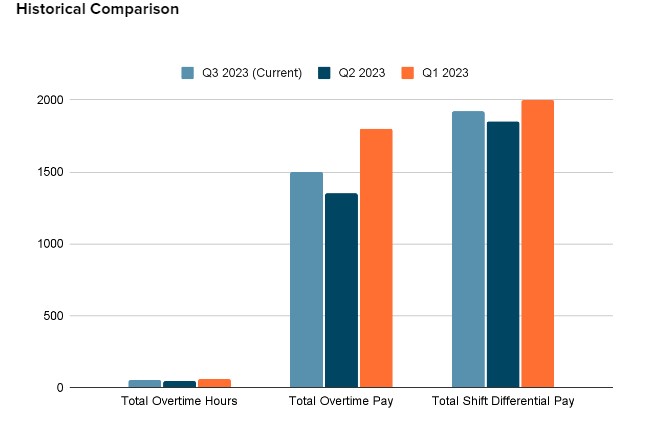
There was a decrease in overtime from Q1 to Q2, but it increased again in Q3.
The shift differential pay has been increasing across the quarters, indicating possibly more employees on the afternoon and night shifts or shifts with higher differential rates.
Department 2
Department Name/Office Name: | |
Number of Employees: | 50 |
Department Head: |
Aggregate Working Hours Analysis
Total Standard Working Hours | Total Actual Working Hours | Overall Difference |
|---|---|---|
400 | 420 | +200 |
Overtime Analysis
Total Overtime Hours | Average Overtime Per Employee | Total Overtime Pay |
|---|---|---|
20 | .40 | $600 |
Shift Pay Analysis
Shift | Number of Employees in Shift | Differential Pay (/hr) | Total Overtime Pay |
|---|---|---|---|
Morning | 20 | 0 | 0 |
Afternoon | 15 | $2 | $240 |
Night | 15 | $4 | $720 |
TOTAL | $960 |
Individual Employee Breakdown
Employee Name | Position | Total Working Hours | Total Overtime Hours | Shift |
|---|---|---|---|---|
[Employee Name] | Software Engineer | 9 | 1 | Night |
Summary
Hours | Amount | |
|---|---|---|
Regular | 420 | $8,400 |
Overtime | 20 | $600 |
Shift Differential | $960 | |
Total | $9,960 |
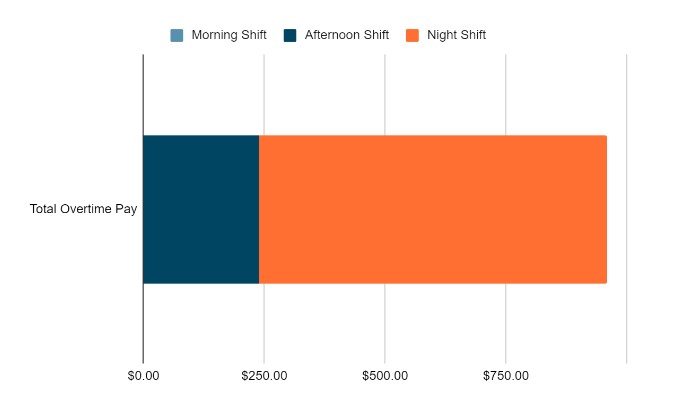
The total overtime for the department is 20 hours, which averages to 0.4 hours or 24 minutes per employee. This may seem minor per person but can accumulate to notable additional costs for the department.
The roles with the highest instances of overtime might be [Finance Specialists] and [Customer Support]. This could be indicative of specific operational demands or challenges these roles are currently facing.
Like Department 1, the night shift appears to have higher instances of overtime compared to other shifts.
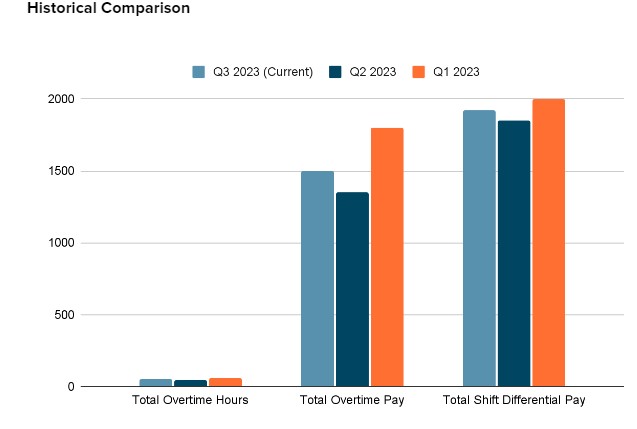
There was a decrease in overtime from Q1 to Q2, but it increased again in Q3.
The shift differential pay has been increasing across the quarters, indicating possibly more employees on the afternoon and night shifts or shifts with higher differential rates.
Interdepartmental Comparative Analysis
The following table provides a side-by-side comparison of the two departments, analyzing their working hours, overtime, and shift pay dynamics.
Parameter | Department 1 (100 employees) | Department 2 (50 employees) |
|---|---|---|
Total Standard Working Hours | 800 hours | 400 hours |
Total Actual Working Hours | 850 hours | 420 hours |
Total Overtime Hours | 50 hours | 20 hours |
Average Overtime Per Employee | 0.5 hours | 0.4 hours |
Total Overtime Pay | $1,500 | $600 |
Total Shift Differential Pay | $1,920 | $960 |
Overall Pay (Regular + Overtime + Shift Differential) | $20,420 | $9,960 |
Department 1, despite having double the number of employees, has a disproportionately higher overtime, suggesting that its workload or operational demands might be higher.
Department 2, while smaller in size, has a closer overtime average per employee to Department 1, indicating a potentially similar work culture or external factors affecting both departments.
The overall pay, especially considering the overtime and shift differentials, is significantly higher for Department 1 due to its larger size, but also possibly due to operational demands.
Recommendations
A deeper dive into specific roles or teams that are clocking more overtime, especially in Department 1, could provide insights into workload distribution or resource challenges.
Both departments could benefit from periodic workload assessments and potential redistribution of tasks to better match resources and demands.
As both departments seem to have notable amounts of overtime, a company-wide review of operational efficiency and resource allocation might be worth considering.







